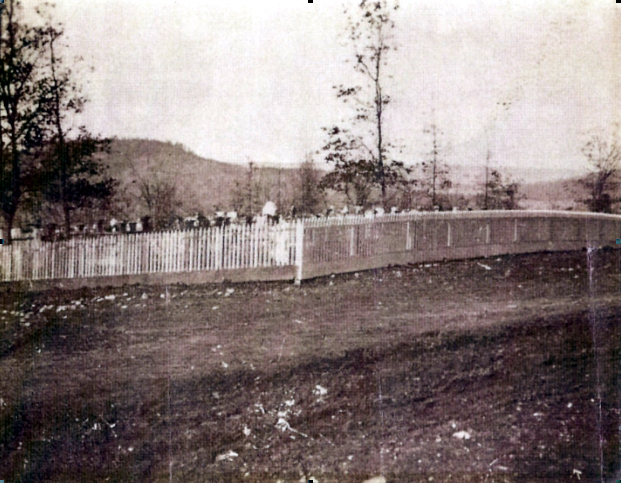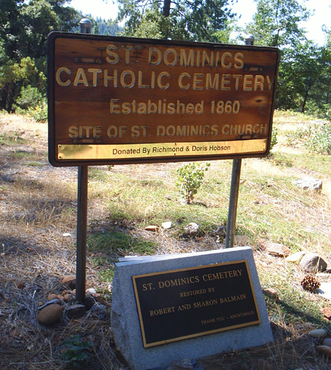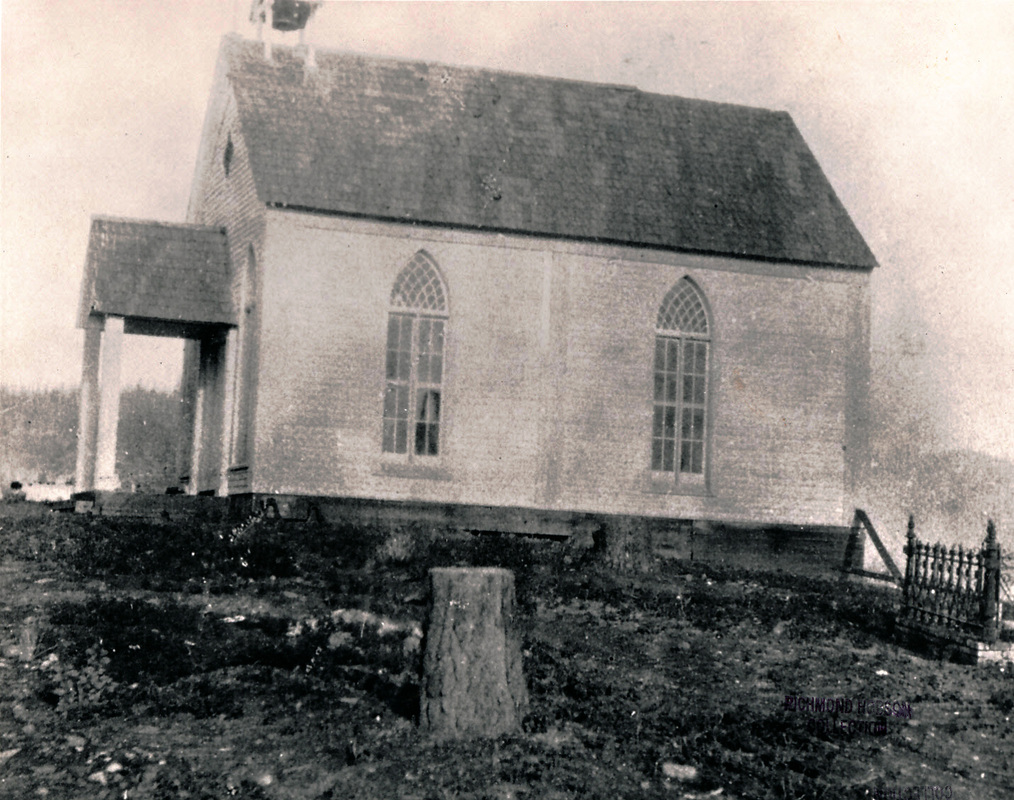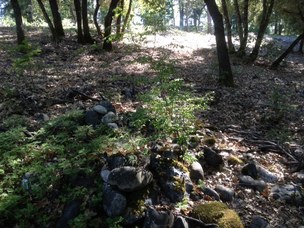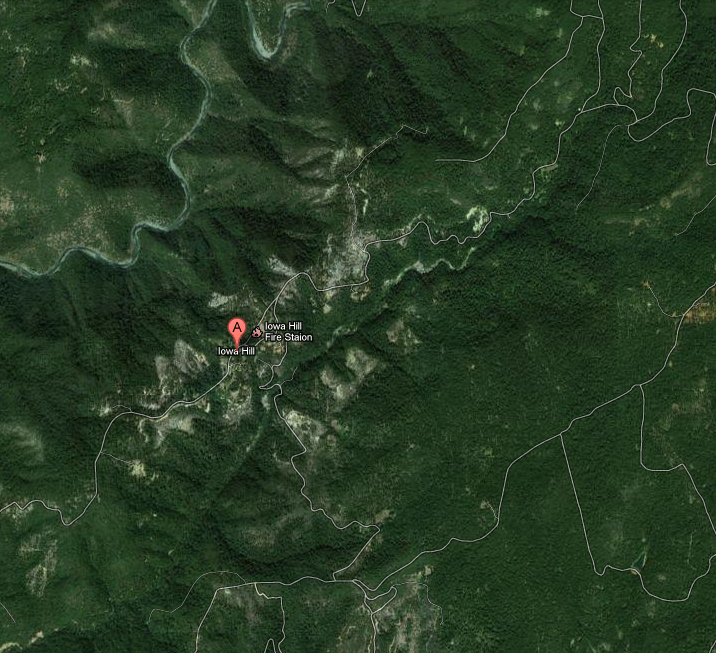Iowa Hill Protestant Cemetery
St. Dominic's Catholic Cemetery (originally called St. Joseph's)
|
St. Dominic's Cemetery, originally called St. Joseph's, was also the location of the Catholic Church in Iowa Hill. Burials list from 1860. There is one child buried in 1859, along with a brother buried in 1860. Possibly that child was moved there when his brother was buried, or he may have been buried there in anticipation of the church soon to be built there.
The first Catholic priest to visit the area was probably Father Shanhan, pastor of Nevada City, in 1852 or the spring of 1853, when he took the trail leading through Grass Valley, Illinoistown, and Iowa Hill and said Mass for the first time in Foresthill. In 1854, Father Peter Deyaert was appointed to care for the northern mines. His records show that he visited and had baptisms in "Iowa Town" in November 1854. Father Thomas Dalton, of Grass Valley, who succeeded Father Deyaert, attended to the Iowa Hill area from 1855. In October of that year, His Grace, Archbishop Allemaney of San Francisco, and Father Dalton visited Iowa Hill to celebrate Mass, preach, and administer the Sacrament of Confirmation at Adelia (Mrs. J. T.) Hill's home. He gave Confirmation to about five Iowa Hill residents and administered to "a pretty good concourse of people." There was a growing need for the faithful in the area to have their own church, and in 1859 a meeting was held at the home of James Gleeson to plan a Catholic Church. A committee was appointed for collecting funds, which included members from Mineral Bar, Iowa Hill, Roach Hill, Monona Flat, Wolverine, Strawberry Flat, Grizzly Flat, Wisconsin Hill, Elizabethtown, and Damascas. Sealed proposals were received from carpenters and builders at Samuel N. Calvin's office in Iowa Hill. Proposals were addressed to James Gleeson, Secretary of the Committee for the erection of the Catholic Church. George W. Currier got the contract, which was to be completed by June 1, 1860. A parcel of land upon the hill known as "Banjo Hill" was recorded on 10 May 1860 from J. P. Hansen to His Grace the Most Reverend Joseph Sadoc Alemany, Archbishop of the Diocese of San Francisco, and was acquired for $10.00 consideration (Placer County Deeds, Book F, page 196). The church, called St. Joseph's, was "one of the principle ornaments of the town" and was tended from Grass Valley by Father Dalton who was instrumental in its completion and who dedicated it on June 20, 1860. The bell, purchased by Irish immigrants, could be heard from the Chicago Park area to Auburn. In 1864, the church blew down and was rebuilt. From 1865 through 1878 it was tended once a month from Foresthill. Iowa Hill became a Mission of Auburn in 1895, as was Foresthill. Iowa Hill remained a mission of Auburn at least through 1930. The church was never rebuilt after being partially destroyed by the fire that swept through the town on September 29, 1920. The church blew down a final time (date unknown), and the boards were used in other Iowa Hill homes. After 1932, Iowa Hill is no longer recorded in the Hoffman's Catholic Directly, and Colfax becomes St. Dominic's with Father F. McEnany as pastor. It wasn't possible to determine when or why St. Joseph's Cemetery became known as St. Dominic's. Possibly it was under the care of the Colfax St. Dominic's Church at one time (although it is not currently). The bell from St. Joseph's Church was stored at the Colfax St. Dominic's for safekeeping and is now mounted in front of the church there. (Special thanks to Sharon and Bob Balmain for their extensive research, as well as to Robin Yonash for this compilation.) |
Iowa Hill Chinese Cemetery
Historical Burials on the Iowa Hill Divide
|
Many people were buried historically on the Iowa Hill Divide but the location of their graves is unknown and may or may not be in one of the official cemeteries. On the map, the Iowa Hill Divide roughly follows Iowa Hill Road and includes the historic gold-mining-era towns of Iowa Hill, Independence Hill, Roach Hill, Bird's Flat, Monona Flat, Grizzly Flat and Damascus. Also nearby were Elizabethtown and Wisconsin Hill. There were also places where miners were sometimes interred by landslides and other disasters. Iowa Hill is the only town still in existence and all of the major mines are closed.
|
